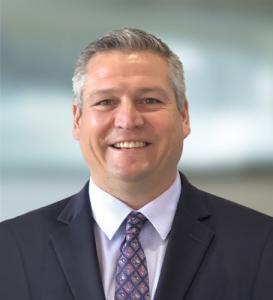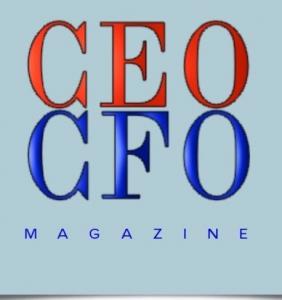
CEO, Peter Van Haur on why VitalConnect is the present and future of Patient Monitoring
CEOCFO interviews VitalConnect CEO Peter Van Haur, on how his company monitors all vital signs and streams data in near real time over an extended period
SAN JOSE, CALIFORNIA, UNITED STATES, January 11, 2023 /EINPresswire.com/ -- CEOCFO Magazine, an independent business and investor publication that highlights important technologies and companies, today announced an interview with Peter Van Haur, CEO of San Jose, CA-based VitalConnect, Inc., a leader in wearable biosensor technology.
To read the full interview visit:
https://www.ceocfointerviews.com/vitalconnect23.html
During the interview with CEOCFO’s Senior Editor Lynn Fosse, addressing the cardiac monitoring segment and what they have developed at VitalConnect, Van Haur said, “Before we get into cardiac monitoring, I think it is important to answer the question that you asked me, which is; what have we developed at VitalConnect. The answer is that we have developed what is known as the VitalCore® Processor. The VitalCore Processor is a patented, home-grown chip that sits inside of our proprietary biosensor, that is capable of monitoring eight unique vital signs, as well as biometric parameters, and it does this simultaneously, 24-hours a day, for a full 7-day wear period, which is unlike any other remote patient monitoring technology that exists today. That is what we have developed. This is the core product, or the core technology, that allows us to bring the future of cardiac monitoring to life. It also allows us to bring additional markets, such as hospital inpatient monitoring, to the next level of patient care.”
Describing how their technology is different from what is available today, Van Haur said, “What is different about this technology is that it is a low power, high frequency, ASIC chip. There are many chips that a company can buy off the shelf, and many of our competitors do buy chips off the shelf. However, to do what we do, one had to create technology with the ability to monitor the human body with a high level of accuracy.” He continued, “As we sit here today, we are very sedentary. We do not move that much. However, when you think about the human body, it is very active - every breath we take, every heartbeat, every movement, makes it challenging to accurately measure vital signs. Therefore, when you need to monitor all of these vital signs simultaneously, it draws a lot of power to take those measurements. That is why many technologies, or really any other technology to this point, has not been able to do what we have been able to do, because they cannot figure out how to monitor multiple vital signs without drawing down battery power. The genius of the VitalCore Processor is the ability to stream all of this data while utilizing very limited battery power for a period of 7 days. That is what makes us different.”
Asked if hospitals are looking for a way to wirelessly monitor, Van Haur shared, “Hospitals are absolutely looking for a way to wirelessly monitor their patients. In fact, that is the second market that we are in commercially today. We are selling our technology for remote patient monitoring inside the four walls of the hospital. There are roughly one million hospital beds in America. Approximately 20% of those beds are what I would refer to as sophisticated beds. They are hard-wired for telemetry, or they have the capability to have telemetry, in ICU units, labor and delivery wards, and so on, which are the high-cost areas of the hospital. That leaves about 800,000 hospital beds that are, what I will refer to as, unsophisticated. The problem that hospitals are faced with today is that if you are a patient and you are admitted to the hospital, you are very sick. The days where a patient gets a traditional total hip replacement and is admitted to the hospital for 4 days are gone. Today, if you get a total hip replacement, you are in and out of the hospital, oftentimes, in 12 hours. Therefore, the hospital has really moved to a place where, if you are admitted, you are really sick, which puts the hospital in a difficult position, because the reality is that these patients need monitoring, but monitoring is very expensive. You need the equipment and you need nurses to monitor this equipment so it is a very expensive endeavor for hospitals to equip their beds with the appropriate technology. With a very inexpensive, band-aid-sized technology like the VitalPatch®, we can easily create sophistication in an unsophisticated environment at an extremely low cost. Hospitals have recognized this. We are commercializing this technology, and I feel like this is the next wave of the future as it relates to monitoring patients in the hospital. We have a unique opportunity to completely transform how patients are managed, resulting in better clinical care and reducing overall healthcare spend.”
When asked what their device recognizes, Van Haur told Lynn, “The device recognizes the following 8 parameters: It monitors the patient’s electrocardiogram, so it is monitoring the heart and the ECG. It is also monitoring the patient’s heart rate. It is monitoring the patient’s heart rate variability. It is monitoring the patient's respiratory rate. It is monitoring the patient’s core body temperature. It is monitoring the patient's activity level in the form of steps. It is monitoring the patient’s posture, whether they are lying down or sitting up. It is also monitoring the patient for fall detection, which is very important in the hospital, as you know, with the risk of falls with many of these patients. These eight core parameters are what we monitor using the VitalPatch, and we stream that data to the cloud in real time. Once it is in the cloud, we have the capability of pushing that data through algorithms. One such algorithm that we use detects up to 21 cardiac arrhythmias. It finds things such as atrial fibrillation, as well as other cardiac abnormalities.”
As for the vision for VitalConnect, Van Haur offered, “The vision of VitalConnect is to be the most sophisticated remote patient monitoring platform in the world.”
For more information:
Lynn Fosse
Senior Editor
CEOCFO Magazine
352-431-3400
lf@ceocfomail.com
Lynn Fosse, Senior Editor
CEOCFO Magazine
+1 352-431-3400
lf@ceocfomail.com
Distribution channels: Companies, Emergency Services, Healthcare & Pharmaceuticals Industry, Science, World & Regional
Legal Disclaimer:
EIN Presswire provides this news content "as is" without warranty of any kind. We do not accept any responsibility or liability for the accuracy, content, images, videos, licenses, completeness, legality, or reliability of the information contained in this article. If you have any complaints or copyright issues related to this article, kindly contact the author above.
Submit your press release


